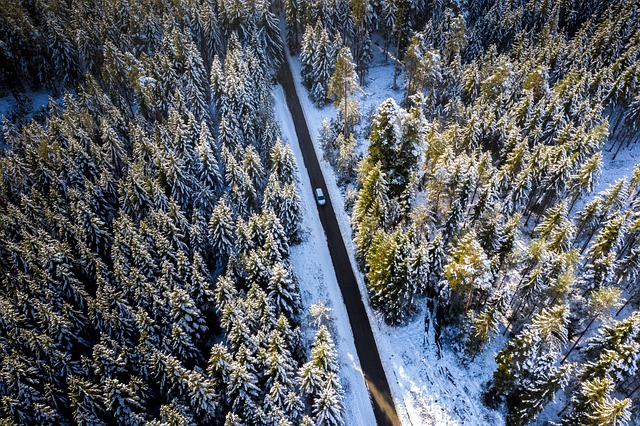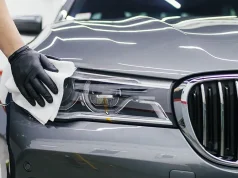
As the leaves begin to change color and the temperature starts to drop, it’s time to start thinking about how to prepare your car for colder weather. No one likes being stranded on the side of the road in the middle of a snowstorm, so it’s important to take the proper precautions. Follow these 10 tips and you’ll be sure to stay safe (and warm) all winter long.
1. Invest in an extended warranty
As the temperatures start to drop and the days grow shorter, it’s important to start thinking about winterizing your car. This means more than just getting the snow tires out of storage—it’s also a good time to invest in an extended warranty.
An extended warranty is a type of insurance that covers repairs and replacement parts for your car. Many people think that extended warranties are a waste of money, but when you consider the high cost of car repairs, they can actually save you a lot of money in the long run.
And when it comes to winterizing your car, car warranty companies can give you peace of mind knowing that you’re covered in case anything goes wrong. So if you’re looking to prepare for winter, investing in an extended warranty is a good place to start.
2. Get a tune-up
Before the cold weather hits, it’s a good idea to take your car in for a tune-up. This will help ensure that your car is running smoothly and efficiently when you need it most. Additionally, getting a tune-up can help improve your gas mileage, which will come in handy as prices tend to rise during the winter months.
3. Check your battery
As the temperatures start to dip, it’s important to make sure your car is prepared for the cold weather. One way to do this is to check your battery. Cold weather can cause battery fluid to freeze, making it difficult for the battery to start the car.
To avoid this, make sure the battery terminals are clean and free of corrosion. You should also test the battery to see if it’s holding a charge. If not, it may need to be replaced.
In addition, it’s a good idea to keep a spare battery in the trunk in case of an emergency. By taking these simple steps, you can help ensure that your car will be ready to take on whatever winter throws its way.
4. Fill up your fluids
As the cold weather sets in, it’s important to take some time to prepare your car for the winter months. One of the most important things you can do is to check and fill all of your fluids. This includes your engine oil, coolant, windshield washer fluid, and power steering fluid.
It’s also a good idea to check your battery and tires to make sure they are in good condition. Taking these simple steps will help to ensure that your car is able to withstand the rigors of winter driving.
5. Invest in snow tires
One of the best ways to prepare your car for cold weather is to invest in a good set of snow tires. Snow tires are specifically designed to provide better traction on icy and snowy roads. They typically have a deeper tread than regular tires, and they are made from a rubber compound that remains flexible in cold temperatures.
As a result, snow tires can help you maintain control of your car during winter driving conditions. In addition, snow tires can also help to improve fuel economy by reducing rolling resistance. If you live in an area where winter driving conditions are common, snow tires are an essential investment.
6. Keep an emergency kit in your trunk
As any experienced driver knows, winter weather can be unpredictable and dangerous. Ice, snow, and freezing temperatures can make even a short drive treacherous. That’s why it’s essential to be prepared for anything by packing a car emergency kit for winter.
Some essential items to include are a shovel, ice scraper, jumper cables, tow strap, first-aid kit, and blankets. It’s also a good idea to pack non-perishable food and water in case you get stranded. By being prepared, you can help ensure that you’ll make it to your destination safely.
7. Don’t use cruise control on icy roads
One of the worst things you can do when driving on icy roads is to use cruise control. Cruise control maintains a constant speed, regardless of conditions.
So if you’re driving along and hit a patch of ice, your car will continue at the same speed. This can cause you to lose control of your vehicle and lead to a devastating accident.
Even if you’re an experienced driver, it’s best to avoid using cruise control on icy roads. The risk is simply not worth it. If you must use cruise control, be sure to disengage it as soon as you hit a patch of ice. This will help you maintain better control over your vehicle and reduce the risk of an accident.
8. Be extra cautious when driving on bridges and overpasses
Driving in the winter can be challenging enough, but it’s important to be extra cautious when driving on bridges and overpasses. These structures are often the first to freeze over when temperatures drop, and they can be very slippery. In addition, they are often exposed to strong winds, which can make it difficult to keep your car stable.
If you do find yourself driving on a bridge or overpass during winter weather, take it slow and be prepared for ice. braking suddenly or making sharp turns can cause your car to lose traction, so it’s important to take things easy. By taking a few extra precautions, you can stay safe while driving on bridges and overpasses during the winter.
9. Leave extra space between you and other cars
You should always leave plenty of space between you and other cars when driving, but this is especially true in winter weather. Ice and snow make it more difficult to stop, so give yourself (and everyone else) some extra room just in case.
10. Don’t use your parking brake in cold weather
When it’s cold outside, your parking brake can freeze, making it difficult (or even impossible) to release when you’re ready to drive again. If possible, avoid using it altogether or only use it sparingly until the temperatures warm up again.
Bonus: Warm up your car before driving
It takes longer for engines to warm up in cold weather, so give yourself some extra time before hitting the road this winter. Idling for a minute or two should do the trick without wasting too much gas. Just don’t forget to turn off your engine when you’re done!
By following these 10 simple tips, you can help prepare both your car and your wallet for colder weather. Taking care of your car now will save you money and headaches down the road, so don’t wait until it’s too late! Stay safe out there this winter.





